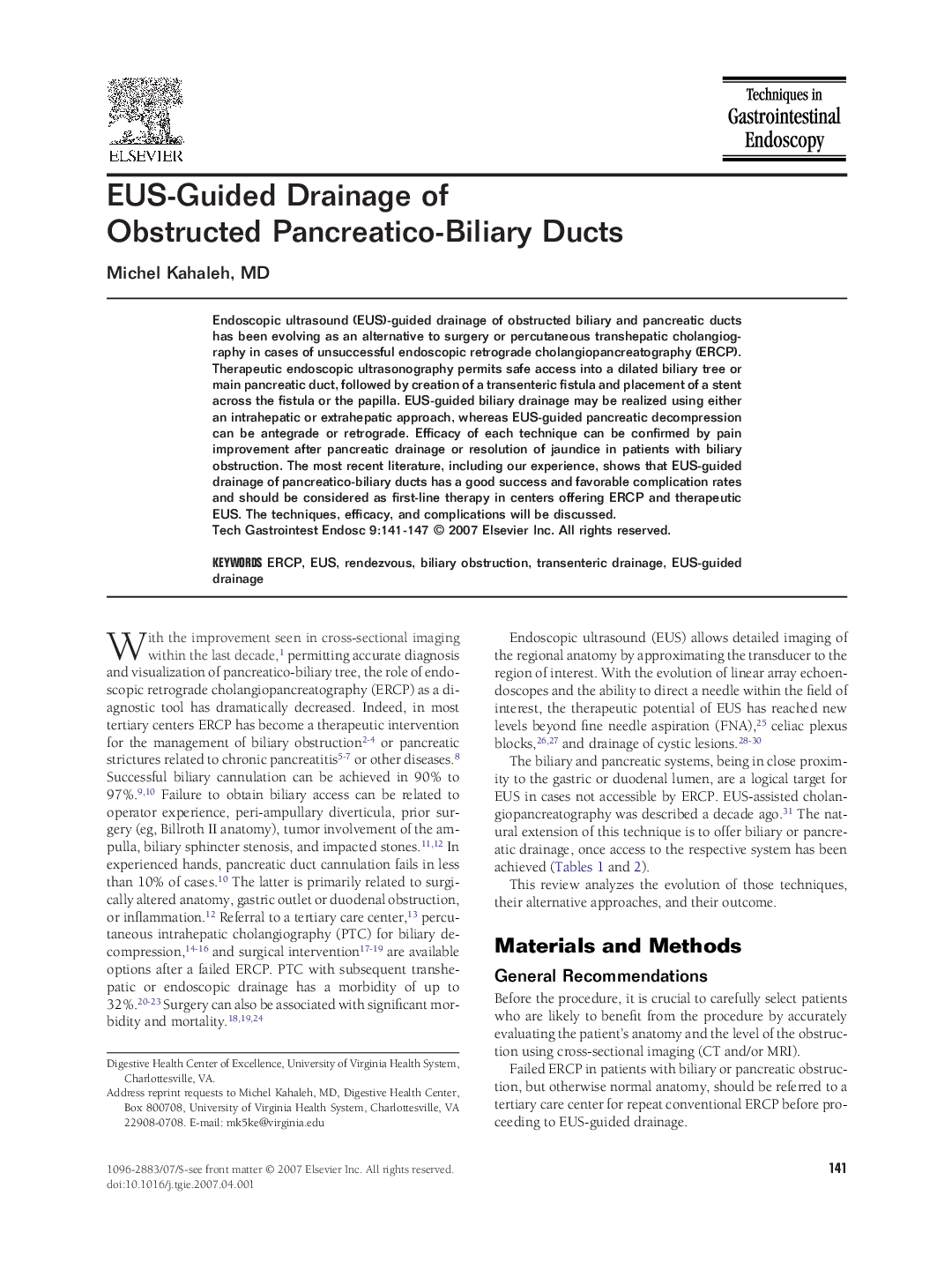| Article ID | Journal | Published Year | Pages | File Type |
|---|---|---|---|---|
| 3322883 | Techniques in Gastrointestinal Endoscopy | 2007 | 7 Pages |
Abstract
Endoscopic ultrasound (EUS)-guided drainage of obstructed biliary and pancreatic ducts has been evolving as an alternative to surgery or percutaneous transhepatic cholangiography in cases of unsuccessful endoscopic retrograde cholangiopancreatography (ERCP). Therapeutic endoscopic ultrasonography permits safe access into a dilated biliary tree or main pancreatic duct, followed by creation of a transenteric fistula and placement of a stent across the fistula or the papilla. EUS-guided biliary drainage may be realized using either an intrahepatic or extrahepatic approach, whereas EUS-guided pancreatic decompression can be antegrade or retrograde. Efficacy of each technique can be confirmed by pain improvement after pancreatic drainage or resolution of jaundice in patients with biliary obstruction. The most recent literature, including our experience, shows that EUS-guided drainage of pancreatico-biliary ducts has a good success and favorable complication rates and should be considered as first-line therapy in centers offering ERCP and therapeutic EUS. The techniques, efficacy, and complications will be discussed.
Related Topics
Health Sciences
Medicine and Dentistry
Gastroenterology
Authors
Michel MD,
